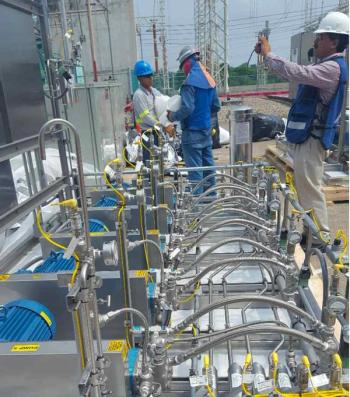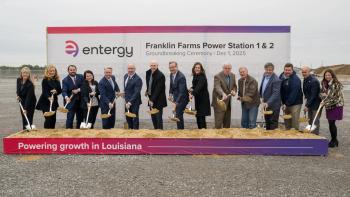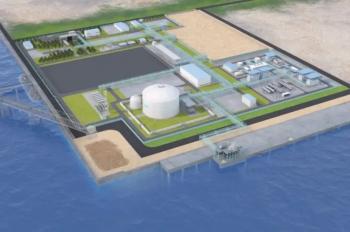
The EIA just said that Clean Power Plan is not good enough!
Of course, they did not say it that way, exactly, but here is what they did say.
The Center for Strategic and International Studies published its International Energy Outlook 2016 on May 11, 2016. I commented that this report which, unlike others, included projections to 2040 and the impact of the new EPA Clean Power Plan.
The summary’s conclusions state that 75% of energy use in 2040 will come from fossil fuel and that the forecast for worldwide power generation CO2 emissions was 43.4Gt, up from 33.5Gt in 2015, a compound growth rate of +1% per year. I commented on this forecast in my previous blog. (
This May 11 report was quickly appended with the May 17 Annual Energy Outlook 2016 Early Release of an Annotated Summary of Two Cases (
The two early release cases and stated conclusions are:
Implementation of the Clean Power Plan (CPP) using a mass-based approach reduces annual electricity-related carbon dioxide (CO2) emissions to between 1,550 and 1,560 million metric tons (MMT) in the 2030-40 period, substantially below their 2005 and 2015 levels of 2,416MMt and 1,891MMt, respectively. Coal’s share of total electricity generation, which was 50% in 2005 and 33% in 2015, falls to 21% in 2030 and to 18% in 2040.
Even without the CPP, electricity-related CO2 emissions remain well below their 2005 level at 1,942 MMT in 2030 and 1,959 MMT in 2040; this outcome reflects both low load growth and generation mix changes driven by the extension of key renewable tax credits, reduced solar photovoltaic (PV) capital costs, and low natural gas prices.
Several observations on these projections:
- They just admitted that a full implementation of the CPP will not allow us to reach a 2C/450ppm target.
- The coal to gas conversion is 82% completed by 2040.
- There is only 400 MMt (0.400Gt) difference between the full implementation of the CPP and No-CPP case.
- The total U.S. CO2 emissions in 2015 were 5721 MMt, split 1925/3346 MMt PowerGen and Non-PowerGen, respectively.
- The forecast asks that you believe that natural gas prices will trend even lower than they are today, through 2040.
- It also asks that you ignore system integration costs, not yet fully considered in renewables claims about cost competitiveness.
- In addition, it asks that various tax credits be extended throughout the forecast period while both Germany and Denmark are just now putting caps on renewables penetration.
Here are the two cases and the assumptions they are based on.
The actual numbers provided suggest to that this improvement in use efficiency is more like 2.12% per year. In other words, efficiency of use will offset any Real GDP increases.
There is no real discussion of the Non-PowerGen values, except a decline of 0.3% in Energy per Capita Use. I have assumed this is a similar offset against the 2.23% per year Real GDP growth, which presumably affects the Non-PowerGen values.
This is my attempt at reconciling the comments and values provided.
The stated endpoint in 2040 of 1560 MMt is 3x the 500 MMt level required and 8X the 200 MMt
We have not explicitly addressed Non-PowerGen actions. Lacking anything specific, the best-case combination is 1560/5812 MMt, resulting in 7372 MMt in 2040.
With these assumptions, the world total is 47Gt/year in 2040.
What is new is that the EIA, presumably with EPA’s blessing, is now trying to shift the conversation from absolute CO2 reductions expressed in tonnes of CO2, to tonnes per unit of GDP.
Whoa!!!
“Tonnes per GDP” is, by definition, “Business as Usual” and an admission that the CPP will not get us to 2C/450ppm.
Here is that redirect language along with some economic “mumbo jumbo” that says Real GDP will increase at 2.23% per year and that there will be an improvement of 1.8% per year in energy use per GDP.
The OECD provides a GDP Forecast in its long term Economic Outlook 2009-2060. I have added the comparable values back to 2005 from World Bank Data to bridge the data from the historical to the forecast.
Here is that data:
The OECD provides a GDP Forecast in its long term Economic Outlook 2009-2060. I have added the comparable values back to 2005 from World Bank Data to bridge the data from the historical to the forecast.
The key factor is the calculated MMt of CO2 per million dollars of GDP, 0.000492 in 2015.
- There was a 10% reduction in this value for both the 2005-2010 and the 2010-2015 periods, based on the data and can be interpreted broadly as an improvement in overall efficiency of use.
- The 1900GtCO2 in the 2C/450 ppm already consumed between 1870-2011, is included as the 2012 starting value in the cumulative calculation.
The OECD GDP forecast is shown below along with the important scaling metrics.
- The OECD GDP Forecast is shown without modification.
- I assumed that same efficiency of use improvements, x0.90 for each 5-year increment, throughout the forecast period to 2060.
- I added the scaled yearly increment based on this GDP Forecast data and underlying efficiency of use assumptions.
- This efficiency of use assumptions are not likely to apply uniformly around the world, but that assumption is embedded in the calculation, nonetheless.
- We bust the 2900Gt budget in 2041 and reach 3719Gt by 2060.
- This is equivalent to 550-600 ppm and perhaps 4°C temperature rise.
- If the 0.90 becomes 0.95, we bust the budget in 2038 and reach 4272Gt in 2060
- Annual release in 2040 becomes 55Gt and 69Gt in 2060
If the U.S., China and India all argue for CO2 tonnes/GDP, it makes sense, that this will become the world’s standard measure.
We have no chance at 2C/450ppm and it is important that we stop pretending that we are doing enough.
We must also stop destroying the opportunity for Nuclear and CCS technologies with the underlying subsidies for natural gas power generation. We will need both of the technologies to meet any kind of meaningful climate change targets.
I have said this before, but it is worth repeating.
If we all had the same “objective”, we would use the current lower cost of natural gas to offset the added cost of CCS, put CCS on Natural Gas Combined Cycle power plants, and in so doing, actually be both on the CCS learning curve and the 2C°/450ppm trajectory.
Newsletter
Power your knowledge with the latest in turbine technology, engineering advances, and energy solutions—subscribe to Turbomachinery International today.





